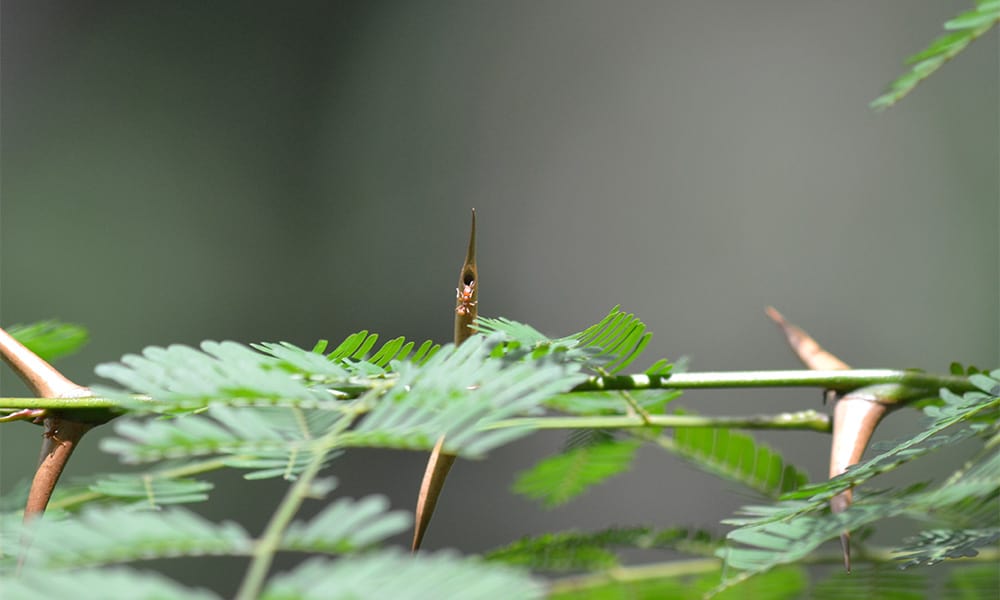Normally for my Tico Times wildlife articles I choose a single species of wild animal, describe what it looks like and what it does, add a story or two about my interactions with them, and if I have some related videos, I share them. Today, instead of a single species of animal, we’re discussing a few species of related trees along with a few species of ants that live on those trees. So, let’s meet the ant acacia tree (and its ants).
There are three species of ant acacias which are trees that grow in Costa Rica, known as cornizuelo en español. Two are found in Guanacaste and the other grows down south, in the area of the Osa peninsula. These three species of small trees play host to four different species of ants. There are three species of ants patrolling the limbs of the Guanacastecan trees and the Osa tree has a species of its own.
Ant acacias trees and ant acacia ants are an example of something called obligate mutualism. Plain old mutualism, within the animal kingdom, is when two or more species have an interaction where there is a net benefit for both.
It’s an ‘I’ll scratch your back, you scratch mine’ situation. Obligate mutualism is a little more hardcore. It describes an interaction between species where they are so reliant on each other, that one would perish without the other. So, it’s an ‘I’ll scratch your back, you scratch mine or we’re both done for’ kind of situation.
The interactions that make these trees and these ants so reliant on each other are numerous and fascinating. The trees house and feed the ant colony, and the ants protect the tree and make sure it has plenty of sunlight to grow. Ant acacia trees grow huge, swollen thorns that the ants hollow out and make into a cozy home/nursery for the next generation of ants. As if a safe home wasn’t enough, the trees also pull out an entire buffet for their ants.
They produce a sugary substance at the base of their leaves that is fuel for the ants and their growing larvae, hidden away in the horns. On top of that, the trees produce another food source called Beltian bodies that are little packets of fat, protein and vitamins.
As payment for the room and board supplied by the tree, the ants patrol the entire tree and aggressively sting/remove any animal, big or small, that is attempting to eat the leaves. They also attack any neighboring vine or branch that attempts to compete for the ant acacia’s sunlight. They’ll even ‘mow’ all of the vegetation around the base of the tree.
My personal interactions with ant acacias (and their ants) began immediately upon my arrival in Costa Rica. I was following a biologist through a patch of brushy forest in Guanacaste in a pair of shorts. He advised me to watch out for the ant acacias, and I said ‘OK’, without mentioning the fact that I didn’t know what ant acacias were. I then immediately walked into some ant acacias and received a handful of stings on my bare legs. Lesson learned. It’s no bullet ant, but it’s definitely unpleasant.
These days I’m more cautious of avoiding ant acacias while checking my camera traps and more prepared to defend myself from their stings (long pants). While I still receive a sting every once in a while, (usually on the back of my neck for some reason), I try not to get too fussy about it. It’s just me participating in a fascinating partnership between acacias and their ants.
About the Author
Vincent Losasso, founder of Guanacaste Wildlife Monitoring, is a biologist who works with camera traps throughout Costa Rica. Learn more about his projects on facebook or instagram. You can also email him at: vincent@guanacastewildlifemonitoring.com

